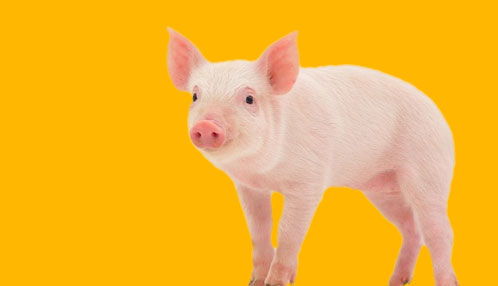A History of Swine

In Ancient Egypt, pork was food for poor people. Pigs were used only to improve seed germination on fields. After sowing, pigs ran across the field to tramp the seeds more profound into the soil. As a result, pigs were considered “unclean,” and swine shepherds were not allowed to enter temples.

Ancient Greeks and Romans were the first to develop methods and techniques of swine growing. Then, pigs were grazing only in open spaces.

When Mongol-Tatar Yoke occupied Kievan Rus, pork became the leading food in Ukraine and Russia in the XIV-XV centuries. The Mongols adopted Islam that prohibited eating pork. That is why tribute collectors took away horses, goats, chicken – everything except for pigs. Peasants started to grow more pigs, and they greased some of their belongings with lard. The Mongols did not dare to touch or take away such objects. In addition, salted lard, unlike meat, could be well preserved in winter and summer.

In 1539, Hernando de Soto landed in America with the first 13 pigs in Tampa Bay, Florida. He is still considered the “Father of the American pork industry”.

The swine industry started to flourish in the age of capitalism in the 18-19th century. It was caused by the extensive growth of cities and the sharply increasing demand for meat. As a result, pigs were not grazing in open spaces anymore. Instead, owners moved them to the backyards.

During the Soviet Union times, there were new farms built in Russia and Ukraine. As a result, scientists were developing local breeds of swine. For example, the North Siberian Pig bred in the low temperatures of Siberia. This wonderful pig is tolerant to weather fluctuations, and at the same time, it has high productivity.
In the 1990s, dozens of farms went bankrupt in Russia and Ukraine, leading breeding farms to close, which nearly destroyed the industry. Additionally, the pig population decreased.
The industry started to recover in the 2000s. Since the 2010s, the industry has been working at full pace.

Now, there are 6 million pigs in Ukraine and 25 million pigs in Russia. Therefore, each citizen of Ukraine consumes 11-15 kg of pork per year, and each citizen of Russia consumes 27 kilograms.
Interesting fact: There are about 1.5 billion pigs globally, with nearly half of them in Asia (China, Japan, Korea, Indo-China).

In the US, the pork industry has an estimated $23.4 billion of gross output and is the third largest in global production, as they produce about 13.8 million tons per year. The industry also supports 550,000 jobs.
References:
https://foodbay.com/wiki/wikis/2020/09/18/iz-istorii-svinovodstva/
https://sobstvennik.org/livestock/pig/01.php
https://www.apk-inform.com/ru/news/1507785
https://latifundist.com/analytics/10-ne-do-zhiru-obzor-ukrainskogo-rynka-svininy
https://tass.ru/ekonomika/11215343
